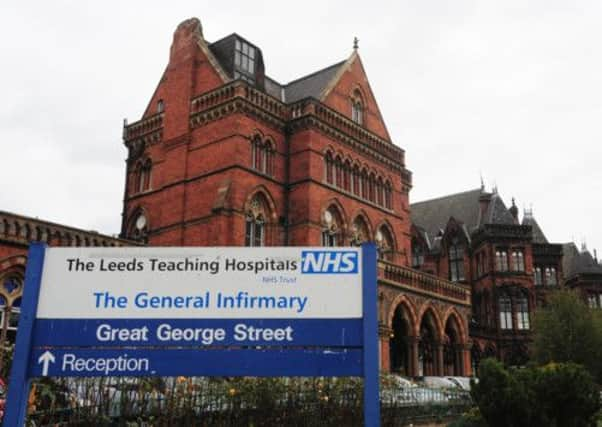Statistical blunders blamed for death rate scare at Leeds heart unit


Surgery has now restarted at the Leeds General Infirmary unit after additional information proved death rates were within accepted levels.
A meeting of Yorkshire councillors heard yesterday NHS England and health watchdog the Care Quality Commission (CQC) were happy care was safe.
Advertisement
Hide AdAdvertisement
Hide AdMortality rate data had been skewed because some details were missing from patient information submitted by Leeds hospitals.
New computer software meant that the organisation compiling the statistics did not know some patients were not counted at all, so the death rates were incorrect.
Mike Bewick, deputy medical director of NHS England, told members of the Yorkshire and Humberside Joint Health Overview and Scrutiny Committee that three issues led to the suspension – the data, concerns raised to the CQC and information from whistleblowers.
He said: “A decision was made on the basis of those three pieces of evidence to take a pause and hold an investigation.”
Advertisement
Hide AdAdvertisement
Hide AdMr Bewick told the meeting that Sir Bruce Keogh, NHS England medical director, was faced with data which showed Leeds had a mortality rate 200 per cent higher than any other hospital and had to act.
He confirmed Sir Bruce received the data the evening before moves were made halt surgery in Leeds, and other concerns about Leeds were raised by staff at a similar unit in Newcastle.
Newly-released information shows that between 2009 and 2012, there were 24 deaths of Leeds patients, compared with a predicted number of 17.
The report by NHS England says around half of all units will have more deaths than expected.
Advertisement
Hide AdAdvertisement
Hide Ad“These findings do not indicate a safety problem in any centre,” it says.
Figures for Leeds and two other hospitals put them close to an ‘alert threshold’, so all will be subject to extra scrutiny.
Maggie Boyle, chief executive of Leeds Teaching Hospitals NHS Trust, said the mortality rate data was “developmental” and had not been made available to the trust for validation.
She said the organisation which compiled it had been working to validate it, originally by July, though they had now been asked to do that more quickly.
Advertisement
Hide AdAdvertisement
Hide AdStacey Hunter, divisional general manager at Leeds Teaching Hospitals, said they took responsibility for there being some data missing.
But she added: “It was not expected to be used in the timeframe it was used in and the software we needed to be able to check whether the data was complete, we only had installed in the organisation on April 4.”
She said most of the missing data was submitted in January, with 33 elements still missing when the suspension took place.
Mr Bewick said there had been “major deficiencies” in the data submitted by Leeds, which NHS England described as “uniquely poor”.
Advertisement
Hide AdAdvertisement
Hide Ad“I think we should move away from that,” he added. “That has been submitted now.”
The meeting was told the Care Quality Commission had investigated concerns raised about the unit in 2011 by charity the Children’s Heart Federation, and found no action was needed. The CQC is due to meet again with the organisation again to discuss new claims.
On staffing levels in the unit, Mr Bewick said they confirmed surgeons were competent.
Councillors heard that 10 patients were treated elsewhere while surgery was suspended in Leeds, with six going to Leicester and the others to Birmingham, Alder Hey in Liverpool and to Newcastle.
Advertisement
Hide AdAdvertisement
Hide AdCommittee members asked NHS England to now issue a public statement confirming the LGI unit was safe, after hearing that the impact on families of young patients had been “enormous” and some had asked for referrals elsewhere.